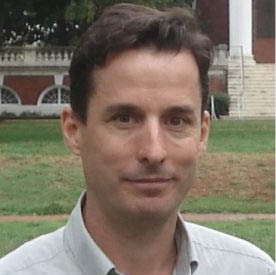2017
TRANSPORTATION
What’s Fuelling the Transition?
Full Event
A successful transition will be more likely if we first ask ourselves the right questions. Ours is: “What’s fuelling the transition?” What will be yours?
Meet our speakers

Anthony Perl
POST-CARBON URBAN MOBILITY TRANSITIONS IN CANADA’S THREE LARGEST CITIES: MONTREAL, TORONTO, AND VANCOUVER - APRIL 11TH

Hervé Levifve
Technical advisor to deputy mayor of Paris in charge of transport, travel, highways and public spaces
ENERGY TRANSITION IN THE TRANSPORT OF GOODS IN URBAN AREAS - APRIL 12TH

Marie-Hélène Massot
Professor at École d’Urbanisme de Paris, Université Paris EST-Créteil
Talk Overview – April 12th Everyday mobility done differently: Why and how?
The main metaphors used to describe contemporary societies involve references to two major themes that are central to studies of the mobility of people in space, here understood as the practice of travel in the conduct of daily life: contraction of time and expansion of territories. Expansion of space at every scale, from economic and cultural globalization and its attendant social issues through to the formation of megalopolises; contraction of time, with a macrosociology (Bauman, Beck, Giddens and many others) that emphasizes the generalization of movement, the acceleration of change, the need for reflexivity and flexibility, and the omnipresence of uncertainty. Microsociology also points to much that is pertinent, including the end of routines and our zapping behaviours.
Shuttling between the demands of hypermodernity, the evolution of the territory of daily life, the identification of behavioural rationalities and the observation of strategies deployed by actors provides the foundation for our reflections on how tomorrow’s mobility will be thought out and organized.

Peter Norton
Associate professor of history in the Department of Engineering and Society, University of Virginia
Talk Overview – April 11th Strange Utopia: Recovering History to Find Our Future
Technology innovation gives us new choices and new means to pursue them, but it doesn’t tell us what we should seek. Yet strangely we often find technology itself cast as the answer. The proffered high-tech solutions are “data driven,” as if no one need ask which data matter or what they really tell us. Asking such questions does not make you a Luddite. It means you appreciate the best that technology has to offer: new means to pursue ends of humans’ choosing. It’s to recognize that we have a spectrum of choices —high-tech, low-tech, and no-tech.
To insist on access to the full spectrum is to recognize that the end is not autonomous systems, but autonomous humans. We should have learned this already. Generations ago, North Americans were sold a utopian vision of freedom delivered by technology. An elusive future in which we could drive anywhere at any time and park for free when we got there was presented with a promise of freedom, but it delivered only car dependency, a deprivation of choice that is antagonistic to freedom. Pursuing this mirage has been fantastically expensive by numerous measures. We hear that technology will now let us pursue the drive-anywhere future more successfully, as if the failure is in the technology itself, and not in human choices.
The drive-anywhere ideal was not a mass preference, but was product sold on the basis of extravagant promises that could not be kept. Those who sold it also justified it by embedding it in a historical trajectory of their own design— a misleading history written to convince us that the drive-anywhere city is the city we always really wanted. We cannot choose the future we want until we recover the history we lost as a casualty of this campaign. It’s a neglected history that offers to recover for us the full spectrum of means— high-tech, low-tech, and no-tech— to seek a future of our choosing.
